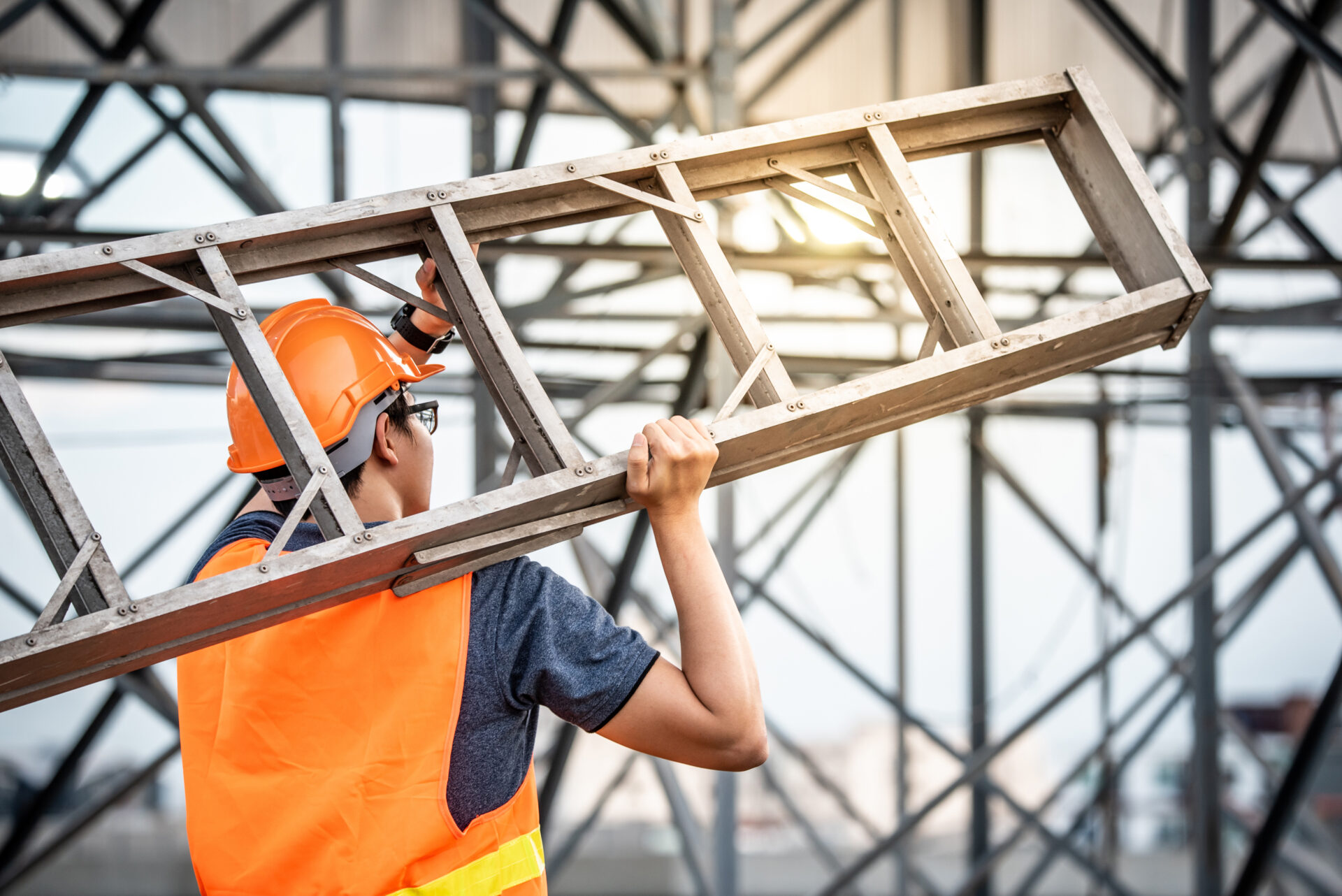A lot of readers might know that ladders are major sources of injuries and fatalities among industrial workers. In fact, 50% of injuries associated with ladders and stairways result in lost work. However, what a lot of readers might not know is that according to the World Health Organization, the US leads the world in the number of work-related ladder incidents (164,000) and deaths (300) each year.
In fatal injuries resulting from falls to a lower level, the primary source is the object or surface from which the worker fell. From 2011 to 2016, the most common sources in these cases were ladders (836 fatal injuries) and roofs (763). The most common height of a fall was over 30 feet (658 fatal injuries).
Why are so many accidents occurring? The most common reasons for accidents on ladders are:
- Selecting the wrong type of ladder
- Using worn, damaged or defective ladders
- Incorrect use of ladders
- Incorrect placement of ladders
OSHA’s code of federal regulations 29 CFR 1910.23(b) states the general requirements for all ladders. I encourage everyone to research and read the code themselves, but it basically goes on to state that the employer is responsible for making sure that ladders are of good design and in good working condition (free of defects, damage or deterioration) and are available for use.
Ladders are a common requirement in the RAVS® section of ISNetworld® and there are different types to choose from. Each type with its own set of requirements and safety procedures to follow. The main classes of ladders are:
- Portable ladders – self-supporting
- Portable ladders – not self-supporting
- Fixed ladders
- Attachable, hook-on ladders (attached to equipment or scaffolds)
Portable, self-supporting ladders are the ladders that you have to open up sometimes. A good example of this would be a step ladder. Since you don’t need to prop it against something, it is self-supporting.
Portable, not self-supporting ladders are the ones that are flat and need to be propped against a wall or other vertical surface in order to be used.
Fixed ladders are the ones that you see on water towers or going down into a manhole. They are part of the structure of the equipment or building.
Attachable, hook-on ladders are self-explanatory. A good example of these are the rolling ladders that you find in warehouses.
When dealing with any type of ladder, there are some general rules of thumb:
- Choose the right type of ladder for the job
- Do not apply more weight on the ladder than it is designed to support (including the user, tools, and materials).
- Inspect each ladder prior to use, looking for damage, defect or deterioration.
- Make sure the surface intended to support the ladder is stable, level, firm ground.
- Secure the ladder so it does not move, if possible
- Use the 4-to-1 rule when setting up the ladder.
- Keep the top and bottom area of the ladder clear of obstructions and hazards.
- Do not set up ladders in doorways or walkways without barriers to protect them.
- Always face the ladder and maintain three points of contact when ascending or descending.
- Keep your body centered between rails. Do not overreach. Read and follow the manufacturer’s instructions.
- Follow all safe work practices and ensure that proper safeguards are in place when using ladders around energized electrical equipment or power lines.
- Make sure to use fiberglass or a ladder made of another non-conductible material when working around power lines or other electrical equipment.
- If using a non-self-supporting ladder, make sure there is someone to keep the ladder secure at the base.
- Ensure that step ladders are fully opened and in the locked position before use. Using a partially closed or closed step ladder is dangerous and could cause serious injury or death.
- Never skip a step when ascending or descending a ladder.
- Never share a ladder with another employee unless the ladder was designed for multiple users.
- Never leave a portable or step ladder unattended. Ladders should always be stored when not in use.
Training must be provided to employees by a competent person. Employees should be trained to recognize hazards related to ladders and to minimize the risk of injury. Training should be applicable to the job assignment and may include but not be limited to:
- The Nature of fall hazards in the work area
- Correct procedures for erecting, maintaining and disassembling the fall protection systems to be used.
- Proper construction, use, placement and care of ladders
- Maximum intended load carrying capacities of ladders used in the company
Are you looking to establish a ladder safety program? JJ Safety is here to save the day. We can provide a written safety program for ladders and provide you with a training program for your employees. Whether you’re looking to implement something in-house or provide an online training option, JJ Safety has options that will best fit your organization.
Give us a call at 866-627-3850 or email us at sales@jjsafetyllc.com. We will be happy to answer your questions.
